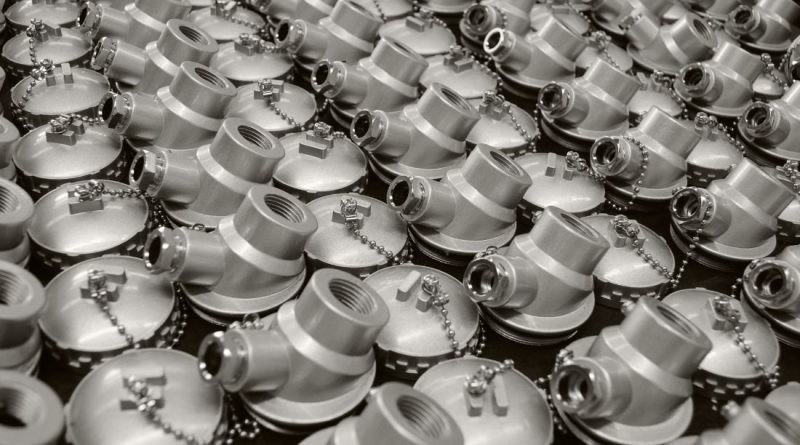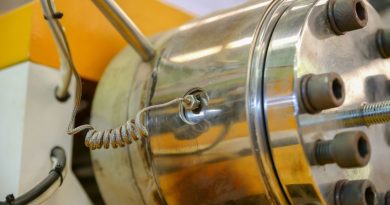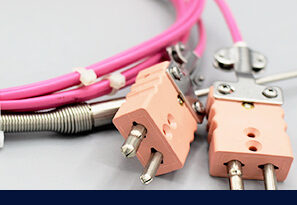How to Choose the Right Thermocouple Platinum Rhodium Type
When it comes to accurate temperature measurement, selecting the right thermocouple platinum rhodium type is crucial. Thermocouples are essential in various industries, and among the many types available, the platinum rhodium thermocouple stands out for its precision and reliability. This guide will help you choose the right thermocouple for your needs, ensuring you make an informed decision.
What Is a Thermocouple Platinum Rhodium? Key Features and Benefits
A platinum rhodium thermocouple is a temperature sensor that leverages the thermoelectric properties of platinum and rhodium. By combining pure platinum with a small amount of rhodium, it significantly enhances performance.
Key Features of Platinum Rhodium Thermocouple
- High Accuracy: A platinum rhodium thermocouple delivers exceptional accuracy and stability, making them ideal for critical measurements.
- Wide Temperature Range: They typically operate over a broad range, from -200°C to 1600°C (-328°F to 2912°F), depending on the design.
- Excellent Repeatability: Their stable output ensures consistent readings over time, which is vital for industrial applications.
- Resistance to Oxidation: The materials resist oxidation, ensuring longevity and reliability in harsh environments.
Benefits of Using Platinum Rhodium Thermocouples
- Enhanced Performance: The combination of platinum and rhodium provides superior performance compared to standard thermocouples.
- Versatility: These thermocouples are suitable for a variety of applications, including laboratories, industrial processes, and aerospace technology.
- Durability: They withstand extreme conditions, making them a cost-effective solution over time.
Choosing a platinum rhodium thermocouple guarantees that your temperature measurements remain reliable and accurate, critical for safety and efficiency in many processes.
Types of Platinum Thermocouple: Which One Is Right for You?
When selecting a platinum thermocouple, understanding the various types available is crucial, as each serves different applications.
Common Types of Platinum Rhodium Thermocouples
- Type R Thermocouple: Contains 87% platinum and 13% rhodium, known for accuracy, often used in high-temperature applications.
- Type S Thermocouple: Made of 90% platinum and 10% rhodium, widely used in laboratories for its precision.
- Type B Thermocouple: Comprises 70% platinum and 30% rhodium, suitable for very high-temperature applications.
Choosing the Right Type for Your Application
- Evaluate Temperature Requirements: Determine the temperature range for your application. For high temperatures, consider Type B; Type R and S are better for lower ranges.
- Consider Environmental Factors: Assess the installation environment, including exposure to contaminants and strong electromagnetic fields.
- Think About Calibration Needs: Some applications require specific calibration standards. Choose a type that meets those needs.
Understanding the different types of platinum rhodium thermocouples helps you select the one that best fits your application.
Factors to Consider When Choosing a Thermocouple Platinum Rhodium
Choosing the right thermocouple platinum rhodium involves several considerations that can affect performance and reliability.
Application Requirements
- Industry Standards: Different industries have specific standards or regulations that your thermocouple must meet. Research these requirements before choosing.
- Measurement Needs: Identify the specific measurements required, including temperature, response time, and accuracy levels.
Environmental Conditions
- Temperature Fluctuations: Consider how temperature changes may affect your readings. In environments with rapid changes, a more responsive thermocouple may be necessary.
- Chemical Exposure: If your thermocouple will face corrosive chemicals, ensure the materials can withstand such conditions without degrading.
Budget Considerations
- Initial Cost vs. Long-Term Value: While platinum rhodium thermocouples may have a higher initial cost, their durability and accuracy often lead to cost savings over time. Weigh this investment against potential future costs.
Carefully considering these factors enables you to choose the right thermocouple platinum rhodium for your specific application.
Temperature Range and Accuracy: Finding the Perfect Fit
Temperature range and accuracy are critical factors that dictate the performance of a platinum rhodium thermocouple. Understanding these elements helps you choose the right model.
Understanding Temperature Range
- High-Temperature Applications: For high temperatures, look for thermocouples that operate effectively without losing accuracy. Types R and B excel in these scenarios.
- Low-Temperature Applications: Ensure the thermocouple maintains accuracy even at the lower end of its range for low-temperature applications. Type S may be suitable.
Accuracy Levels
- Standard Accuracy: Most platinum rhodium thermocouples offer a standard accuracy of ±0.5°C to ±1.0°C, sufficient for many industrial uses.
- High Precision Requirements: If your application demands higher accuracy, consider specialized thermocouples designed for enhanced performance.
Balancing Range and Accuracy
When selecting a thermocouple, find a balance between temperature range and accuracy. A thermocouple that performs well at extreme temperatures may not provide the same accuracy as one designed for moderate temperatures. Assess your specific needs to strike the right balance.
Installation Tips for Optimal Performance of Your Thermocouple
Proper installation of your platinum thermocouple is vital for optimal performance. Here are tips to ensure effective function.
Selecting the Right Location
- Avoid Heat Sources: Do not install the thermocouple too close to heat sources that may cause inaccurate readings.
- Consider Airflow: Position the thermocouple to allow proper airflow, as stagnant air can lead to incorrect measurements.
Correct Wiring Techniques
- Use Proper Connectors: Choose connectors compatible with platinum rhodium thermocouples to prevent signal loss and ensure accurate readings.
- Minimize Length: Keep wiring lengths short to reduce potential interference and voltage drop.
Calibration and Testing
- Regular Calibration: Schedule regular calibration to maintain accuracy over time, especially in industrial settings where precision matters.
- Conduct Tests After Installation: After installation, test to ensure the thermocouple functions correctly and provides accurate readings.
Following these installation tips maximizes your platinum rhodium thermocouple’s performance and longevity.
Common Mistakes to Avoid When Selecting a Thermocouple Platinum Rhodium
Selecting the right platinum rhodium thermocouple can be challenging, and several common mistakes can lead to poor performance. Here are pitfalls to avoid.
Neglecting Application Needs
Many buyers overlook their application’s specific requirements, leading to selecting a thermocouple that does not meet necessary standards. Always assess your operational needs before purchasing.
Ignoring Environmental Factors
Failing to consider environmental conditions—such as exposure to chemicals, humidity, and temperature fluctuations—can cause equipment failure. Choose a thermocouple that withstands your environment.
Underestimating Calibration Importance
Calibration is essential for maintaining accuracy. Many users neglect this step, assuming their thermocouple will remain accurate indefinitely. Schedule regular calibration to ensure continued performance.
Overlooking Supplier Reputation
Not all suppliers are equal. Choose a reputable supplier with a history of providing high-quality thermocouples. Research reviews and ask for recommendations to find a trusted source.
Avoiding these common mistakes ensures your selection of a thermocouple platinum rhodium is informed and suitable for your needs.
| Common Mistakes | Description | Prevention Strategies |
| Neglecting Application Needs | Overlooking specific operational requirements can lead to poor performance. | Assess all application details before purchasing. |
| Ignoring Environmental Factors | Failing to consider exposure to chemicals and temperature fluctuations can cause equipment failure. | Evaluate the installation environment thoroughly. |
| Underestimating Calibration Importance | Assuming a thermocouple remains accurate indefinitely may lead to inaccuracies. | Implement a regular calibration schedule to maintain precision. |
| Overlooking Supplier Reputation | Not all suppliers provide quality thermocouples, risking subpar performance. | Research and choose reputable suppliers with positive reviews. |
FAQs About Platinum Rhodium Thermocouples
What is a platinum rhodium thermocouple used for?
Platinum rhodium thermocouples are used for high-precision temperature measurement in applications such as laboratories, industrial processes, and aerospace technology.
How do I know which type of platinum rhodium thermocouple to choose?
Evaluate your application’s temperature requirements, environmental factors, and calibration needs to determine the best type for your specific use.
Are platinum rhodium thermocouples worth the investment?
Yes, while they may have a higher initial cost, their accuracy, durability, and longevity often lead to significant cost savings over time.
In conclusion, selecting the right thermocouple platinum rhodium involves understanding its features, types, accurate temperature range, and installation best practices. By considering the factors outlined, you can make a well-informed decision that leads to improved measurements and reliable performance in your applications. Whether in a laboratory, industrial setting, or any field requiring precise temperature measurement, a platinum rhodium thermocouple serves as an invaluable tool for success.
When it comes to accurate temperature measurement, selecting the right thermocouple platinum rhodium type is crucial. Thermocouples are essential in various industries, and among the many types available, the platinum rhodium thermocouple stands out for its precision and reliability. This guide will help you choose the right thermocouple for your needs, ensuring you make an informed decision.



